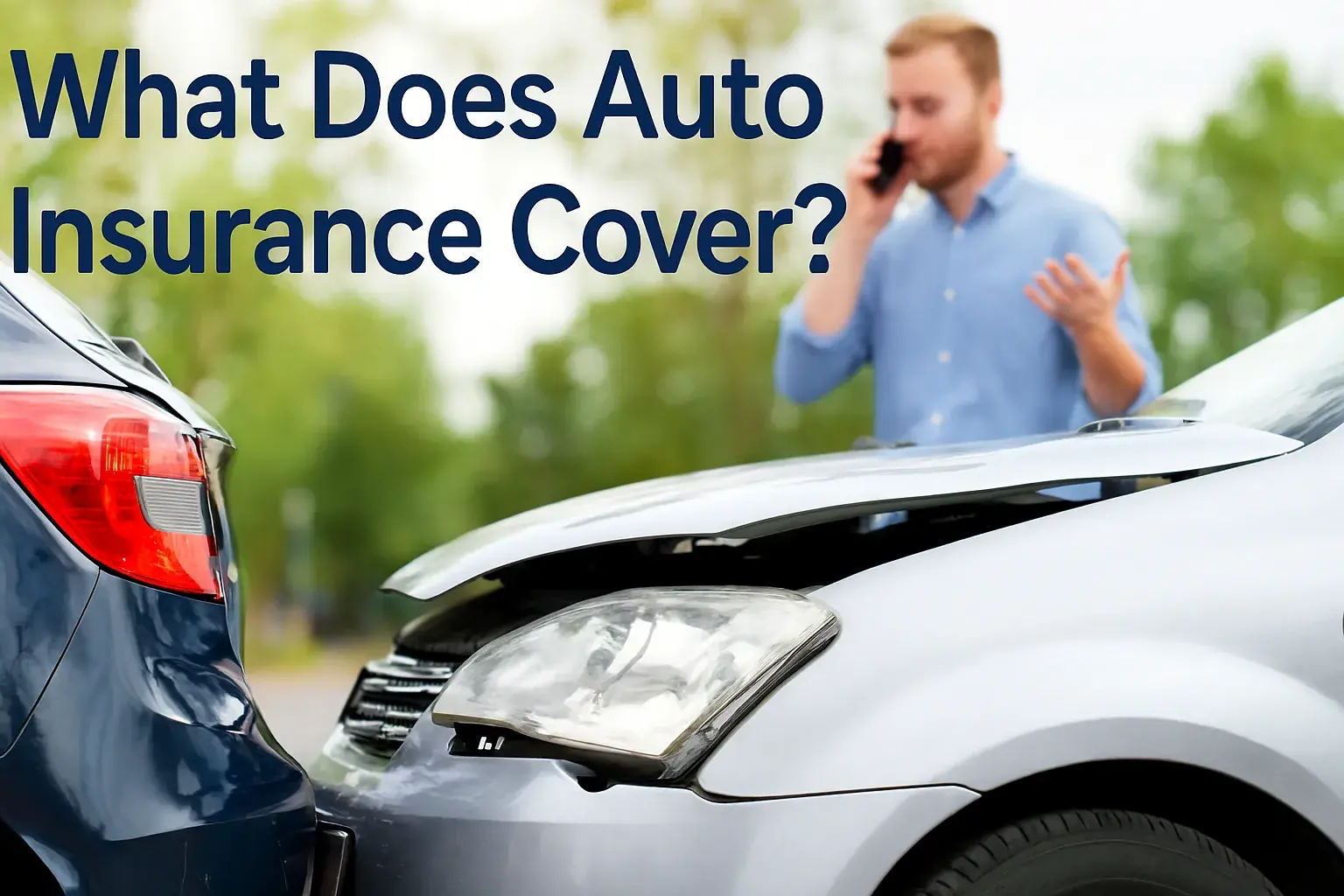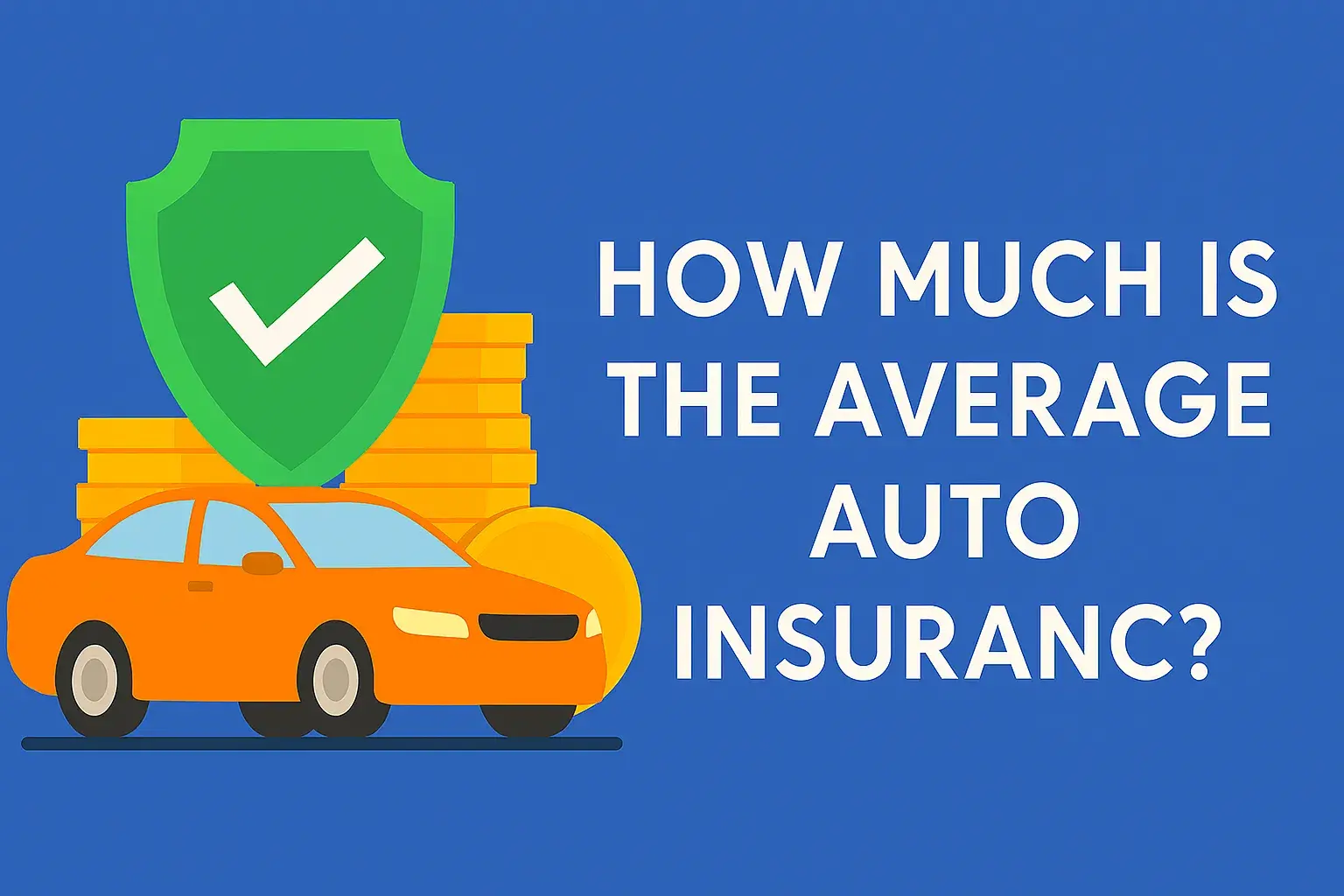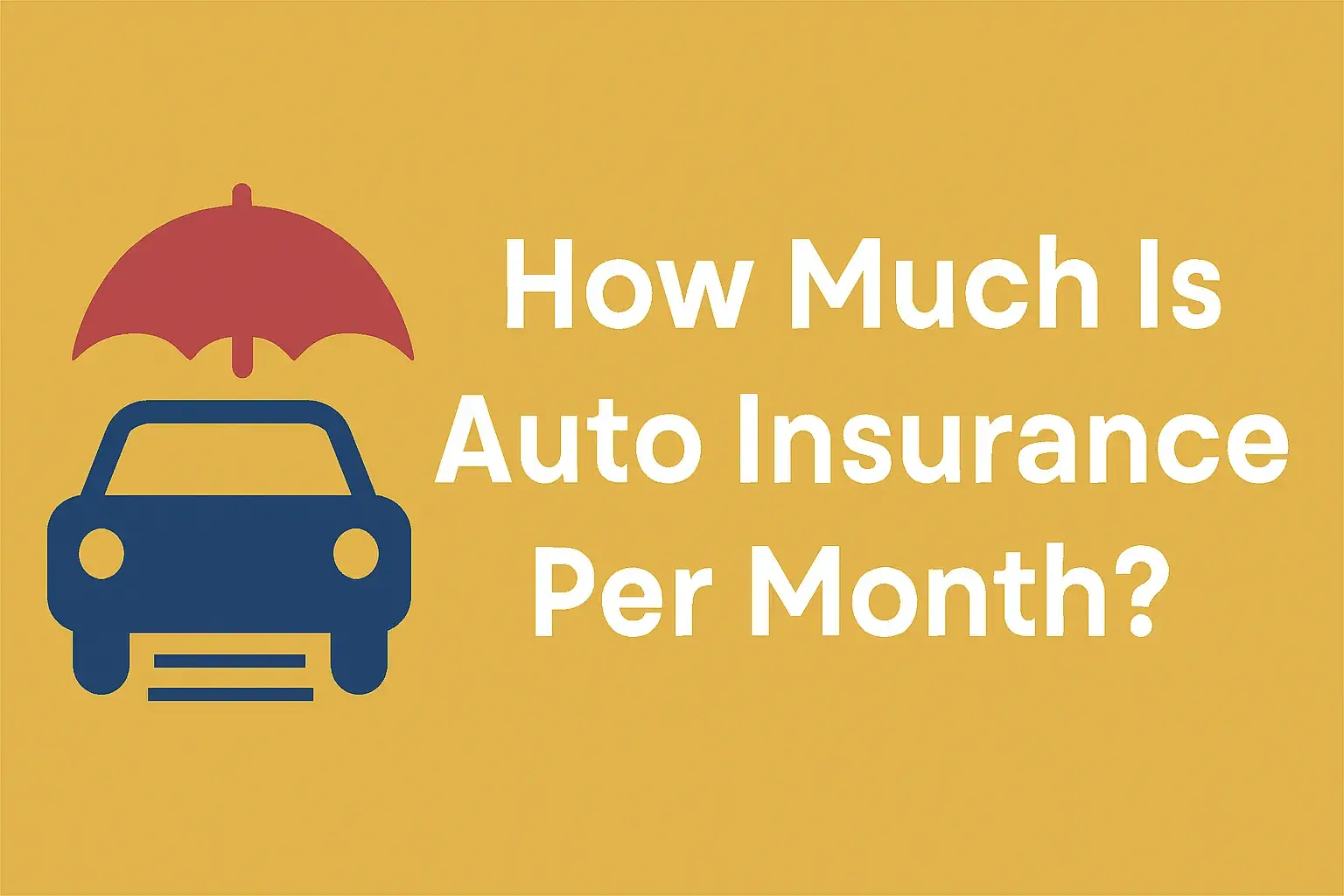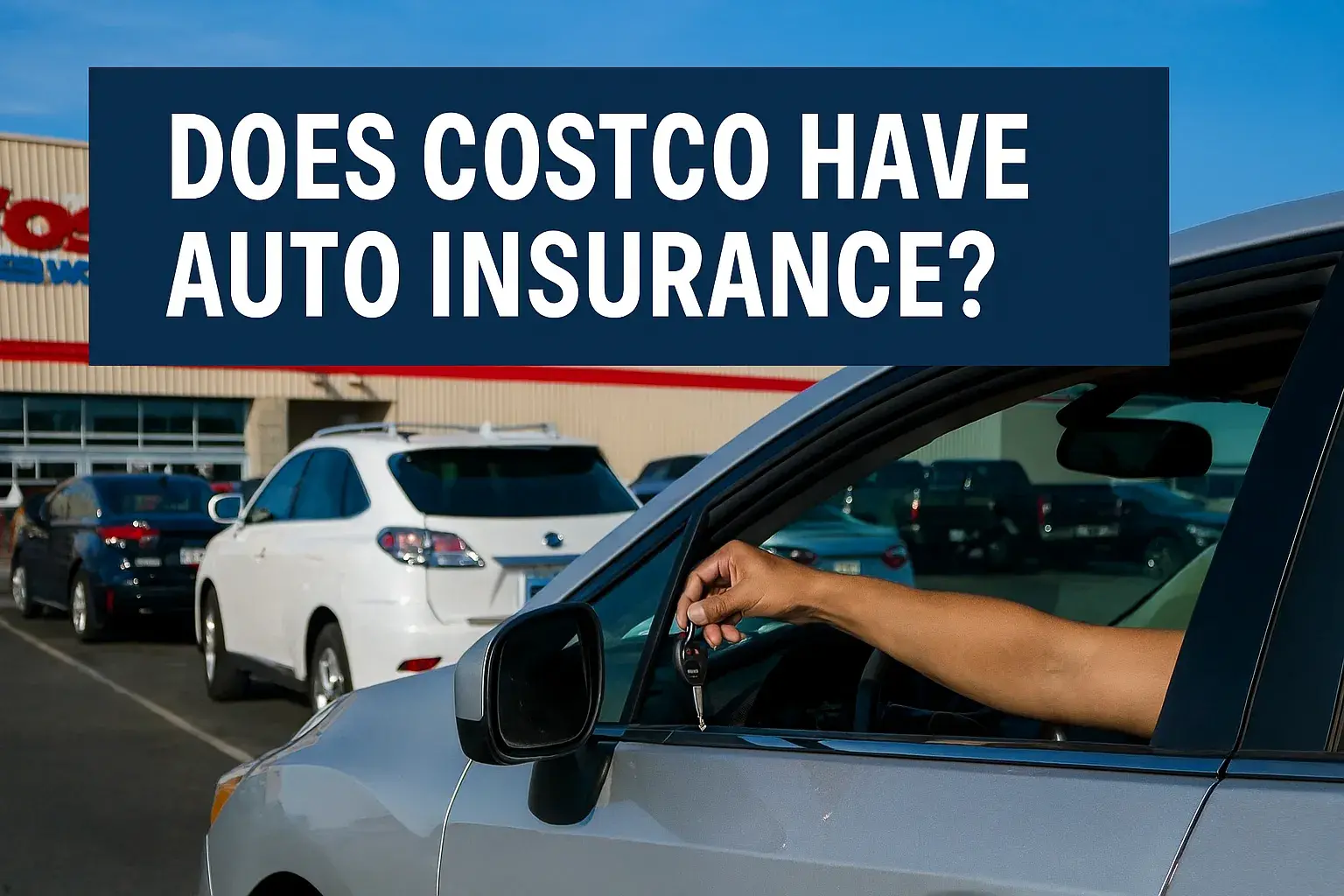11
Sep

Navigating the world of auto insurance can feel like deciphering a complex code. You know you need it, but the pages of legal jargon and coverage types can be overwhelming. Yet, understanding your policy is one of the most financially responsible things you can do as a driver. So, what does auto insurance actually cover? In short, it’s a financial safety net designed to protect you, your passengers, your vehicle, and your assets from the staggering costs that can result from car accidents, theft, and other unexpected events.
This definitive guide will demystify every aspect of your auto insurance policy coverage. We'll break down the mandatory types of auto insurance coverage, explain the optional add-ons, and clarify common misconceptions. By the end, you'll be equipped with the knowledge to make informed decisions, ensuring you have the right protection without paying for extras you don’t need.
Introduction: Why Your Auto Insurance Policy is Your Financial Shield
Imagine causing an accident that results in a multi-car pileup. The medical bills for injured parties could soar into the hundreds of thousands of dollars. The property damage to other vehicles could be tens of thousands more. Without the right auto insurance benefits, you would be personally responsible for these costs, potentially leading to financial ruin. Auto insurance exists to prevent that.
A standard policy is a package of several different coverages. Some are required by law, while others are optional but highly recommended. The core benefits of auto insurance include:
-
Liability Protection: Covers costs for injuries and damage you cause to others.
-
Vehicle Protection: Covers repairs or replacement of your own car.
-
Medical Protection: Covers medical expenses for you and your passengers.
-
Lawsuit Protection: Helps protect your assets if you're sued after an accident.
Understanding the Basics: How Auto Insurance Policies Work
At its core, an auto insurance policy is a contract between you and your insurance company. You agree to pay a premium (monthly, every six months, or annually), and in return, the company agrees to pay for specific car-related financial losses as outlined in your policy.
Policies are made up of different coverages, each with its own limit and deductible.
-
Limit: The maximum amount your insurer will pay for a covered loss. For example, if you have a $50,000 limit for property damage liability and cause $65,000 in damage to someone else's car, you could be on the hook for the remaining $15,000.
-
Deductible: The amount you agree to pay out-of-pocket before your insurance kicks in. For instance, if you have a $500 deductible for comprehensive coverage and a tree branch causes $2,000 in damage to your car, you pay $500, and your insurance pays the remaining $1,500. Choosing a higher deductible typically lowers your premium.
Required vs. Optional Coverage
Nearly every state requires drivers to carry a minimum amount of liability insurance. However, these state minimums are often woefully inadequate to cover the costs of a serious accident. Everything beyond liability—such as collision insurance, comprehensive coverage, and others—is technically optional. But if you have a loan or lease on your vehicle, your lender will require you to carry both collision and comprehensive to protect their financial interest in the car.
What Auto Insurance Typically Covers: Breaking Down Each Coverage Type
Let's dive into the specifics of each common coverage type, what it protects, and when it applies.
1. Liability Coverage: Your Legal Responsibility Shield
Liability insurance is the cornerstone of most auto policies and is mandatory in most states. It covers costs for injuries and damage you, or someone driving your car with permission, cause to others. It does not cover damage to your own vehicle or your own injuries. Liability is split into two main components:
Bodily Injury Liability (BI)
This covers medical expenses, pain and suffering, lost wages, and legal fees for other people injured or killed in an accident you cause. It also provides a legal defense if you are sued. Limits are typically presented as split limits, e.g., 100/300/50.
-
Example: You run a red light and hit another car, injuring the driver and passenger. Your BI coverage would pay for their ambulance ride, hospital bills, and rehabilitation.
Property Damage Liability (PD)
This covers the cost of repairing or replacing property you damage in an accident, most commonly other vehicles, but also fences, mailboxes, buildings, or lamp posts.
-
Example: The same accident also totaled the other driver's car. Your PD coverage would pay to replace their vehicle.
2. Collision Coverage: Repairing Your Own Car
Collision insurance is optional but crucial. It pays for damage to your own car resulting from a collision with another vehicle or object (like a guardrail, tree, or pothole), regardless of who is at fault.
-
Deductible Applies: You choose your deductible amount ($250, $500, $1,000 are common).
-
Example: You slide on ice and hit a telephone pole. Collision coverage would pay to repair your car, minus your deductible.
3. Comprehensive Coverage: Protection Beyond Collisions
Often called "other-than-collision" coverage, comprehensive coverage is also optional but highly recommended. It covers damage to your car from events that are not collisions. Common perils include:
-
Theft of your vehicle or its parts
-
Vandalism and malicious mischief
-
Fire, explosion, or earthquake
-
Falling objects (like a tree branch or hail)
-
Damage from animals (like hitting a deer)
-
Weather events like windstorms, floods, or hail
-
Deductible Applies: Like collision, you'll have a deductible.
-
Example: A hailstorm dents your car's roof and hood. Comprehensive coverage would pay for the repairs, minus your deductible.
4. Medical Payments Coverage (MedPay)
Medical payments coverage is optional in most states. It helps pay for reasonable medical expenses for you and your passengers injured in an accident, regardless of who is at fault. It can cover costs like hospital visits, surgery, X-rays, and even funeral costs.
-
No Deductible: MedPay typically has no deductible.
-
Example: You are injured in a crash. MedPay would help cover your health insurance copays and deductibles.
5. Personal Injury Protection (PIP)
Personal Injury Protection (PIP), or "no-fault" insurance, is required in some states and optional in others. Like MedPay, it covers medical expenses for you and your passengers. However, PIP is broader and can also cover extended benefits like a portion of lost wages, essential services (e.g., child care if you're unable to perform those duties), and rehabilitation costs.
-
Example: You are unable to work for a month after a serious accident. PIP would cover your medical bills and reimburse you for a percentage of your lost income.
6. Uninsured and Underinsured Motorist Coverage (UM/UIM)
Shockingly, many drivers are on the road illegally without insurance. Others have only minimal coverage. This is where uninsured motorist coverage (UM) and underinsured motorist (UIM) coverage protect you.
-
Uninsured Motorist (UM): Covers your injuries (and sometimes property damage, depending on the state) if you're hit by a driver with no insurance.
-
Underinsured Motorist (UIM): Covers your expenses when the at-fault driver's insurance limits are too low to cover your medical bills.
-
Example: A driver with minimal insurance runs a stop sign and T-bones your car, causing you severe injuries totaling $100,000. If their policy maxes out at $25,000, your UIM coverage would cover the remaining $75,000.
7. Optional Add-Ons and Endorsements
Most insurers offer additional protections for a small extra premium.
Rental Car Reimbursement
This pays for a rental car while your vehicle is being repaired after a covered claim (e.g., after a collision). It comes with a daily and per-incident limit (e.g., $30/day, $900 max).
Roadside Assistance
This service provides help for common roadside emergencies like towing, jump-starts, flat tire changes, lockout service, and fuel delivery. It’s often a very affordable addition to your policy.
Other common endorsements include gap insurance (crucial for leased or financed new cars), custom parts and equipment coverage, and rideshare insurance (for drivers of Uber/Lyft who are often not fully covered by the app's policy alone).
What Auto Insurance Usually Doesn’t Cover: The Common Exclusions
It's just as important to know what your policy won't pay for. Standard exclusions across the industry include:
-
Normal Wear and Tear: Items like worn-out brake pads, bald tires, dead batteries, and fluid leaks are considered maintenance issues and are not covered.
-
Routine Maintenance: Oil changes, tire rotations, and other scheduled services are your responsibility.
-
Personal Belongings: If your laptop or golf clubs are stolen from your car, that would be covered under your homeowners or renters insurance policy, not your auto insurance.
-
Intentional Damage or Illegal Activity: Damage you cause intentionally or while committing a crime will not be covered.
-
Using Your Car for Business: Personal auto policies typically exclude coverage if you are using your vehicle for delivery services (e.g., pizza delivery, Amazon Flex) or other business purposes. You need a commercial policy.
-
Rideshare Gaps: If you are driving for a ridesharing app, there's often a gap between your personal policy and the company's policy where you may have little to no coverage. A specific rideshare endorsement is needed.
-
Mechanical Breakdowns: Engine failure or transmission problems unrelated to a covered event are not covered.
"Full Coverage Auto Insurance" Explained
You've probably heard the term "full coverage auto insurance." It’s important to know that this is not a technical insurance term. There is no single policy called "full coverage." Instead, it's a common shorthand for a policy that includes the strongest recommended protections:
-
Liability Insurance (at high limits, well above state minimums)
-
Collision Insurance
-
Comprehensive Insurance
It often also includes UM/UIM coverage and other add-ons. While it offers robust protection, it’s not "full" in the literal sense—it doesn't cover everything (like the exclusions listed above).
Auto Insurance Requirements by State: A Variable Landscape
Coverage requirements by state are not uniform across the U.S. This is a critical factor in determining your policy. For example:
-
No-Fault States: States like Michigan, New York, and Florida require PIP coverage. Your own insurance pays for your injuries regardless of fault.
-
Tort States: Most states are "tort" states, meaning the driver who is at fault for the accident is responsible for the damages.
-
Minimum Limits: State minimums for liability vary wildly. For example, California requires 15/30/5, while Alaska requires 50/100/25. Relying solely on your state's minimum can be a massive financial risk.
Always check your state's specific Department of Insurance website for the latest requirements.
Factors That Affect Your Auto Insurance Coverage & Cost
The types of auto insurance coverage you choose and their limits are the biggest factors in your premium, but insurers also consider:
-
Your Driving Record: Accidents and tickets signal a higher risk and lead to higher rates.
-
Your Vehicle: The car's make, model, year, safety record, and likelihood of theft all affect the price to insure it.
-
Your Demographics: Age, gender, and marital status can influence rates.
-
Your Location: Drivers in urban areas with higher rates of accidents and theft pay more than those in rural areas.
-
Credit History: In most states, insurers use credit-based insurance scores to help determine risk and set premiums.
-
Coverage Deductibles: Choosing a higher deductible lowers your premium, while a lower deductible raises it.
Common Misconceptions About Auto Insurance Coverage
Myth 1: "My insurance will automatically cover anyone who drives my car."
Fact: While "permissive use" is typically covered, if someone living in your household (like a teenager) is not listed on your policy and gets in an accident, the insurer may deny the claim. Always list all household drivers.
Myth 2: "The color of my car affects my insurance rate."
Fact: Insurers don't ask for or care about your car's color. They care about its make, model, engine size, and safety features.
Myth 3: "My personal auto policy covers me when I drive for Uber or Lyft."
Fact: Most personal policies explicitly exclude commercial use. During certain periods of driving for a rideshare app, you may have a dangerous coverage gap.
How to Choose the Right Auto Insurance Coverage
Selecting the right policy isn't one-size-fits-all. Follow these steps:
-
Assess Your Needs: Do you have a new car? A long commute? Significant assets to protect? Do you have health insurance that would cover accident injuries? Your answers will guide your coverage choices.
-
Skip State Minimums: Purchase liability limits that are high enough to protect your assets (e.g., home, savings). 100/300/100 is often a good starting point.
-
Consider Your Vehicle's Value: The older your car, the less sense it may make to carry collision and comprehensive coverage. If your car's value is less than 10 times the annual premium for these coverages, it may be time to drop them.
-
Compare Quotes: Get quotes from at least three different insurers for the exact same coverage levels. Prices can vary dramatically.
-
Ask About Discounts: Inquire about bundling (e.g., bundling auto and home insurance), safe driver, good student, paid-in-full, and other discounts.
-
Review Regularly: Your life changes, and so should your policy. Review your coverage every year or after a major life event (marriage, move, new teen driver).
Internal Linking Opportunity: For more tips, read our guide on "How to Lower Your Auto Insurance Premiums Without Sacrificing Coverage."
Conclusion: Knowledge is the Key to Protection
Understanding the answer to "what does auto insurance cover?" empowers you to move from a state of confusion to one of confidence. Your auto insurance policy is a customizable toolkit designed to manage risk. By carefully selecting the right types of auto insurance coverage and appropriate limits, you secure a powerful financial shield, ensuring that a moment of misfortune on the road doesn't turn into a lifetime of financial hardship.
Don't just set and forget your policy. Be proactive, ask questions, and work with your insurance agent to build a policy that truly fits your life and protects your future.
Frequently Asked Questions
Q1: What are the 3 main types of car insurance?
A: While there are many coverages, the three foundational types are: 1) Liability Insurance (covers others, required by law), 2) Collision Insurance (covers damage to your car from an accident), and 3) Comprehensive Insurance (covers your car from non-collision events like theft or weather).
Q2: Does auto insurance cover theft?
A: Yes, but only if you have comprehensive coverage. This optional coverage specifically protects your vehicle against theft. If your car is stolen, comprehensive insurance would cover the actual cash value of the vehicle, minus your deductible.
Q3: Does car insurance cover natural disasters?
A: Yes, damage from events like hail, floods, hurricanes, tornadoes, and falling objects caused by wind is covered under comprehensive coverage. Standard policies do not cover earthquakes; that requires a separate endorsement or policy in most cases.
Q4: Does "full coverage" include roadside assistance?
A: Not automatically. "Full coverage" typically refers to liability, collision, and comprehensive. Roadside assistance is an optional add-on (endorsement) that you must select and pay a small extra premium for.
Q5: What is not covered by auto insurance?
A: Common exclusions include intentional damage, using your car for commercial delivery, normal wear and tear, mechanical breakdowns, and damage from a nuclear hazard. Personal items inside the car are also not covered.
Q6: Does auto insurance cover rental cars?
A: It depends. If you have comprehensive and collision coverage on your personal policy, it often extends to rental cars within the U.S. However, there may be limitations. The rental company's loss damage waiver (LDW) is optional but offers primary coverage and avoids any claims on your personal policy.
Q7: Is hitting a deer covered by comprehensive or collision?
A: Hitting a deer (or any animal) is covered under comprehensive coverage. This is because it is considered a random event with an animal, not a collision with another vehicle or object.
Q8: Does car insurance cover medical bills after an accident?
A: Yes, through several channels. If you're at fault, your MedPay or PIP can cover your bills. If another driver is at fault, their bodily injury liability coverage should pay for your medical expenses. Your own health insurance is also a primary payer in many cases.
Q9: Does car insurance cover someone else driving my car?
A: Generally, yes. Most policies extend coverage to occasional drivers who have your permission to use the car (this is called "permissive use"). However, it's crucial to list all regular household drivers on your policy to avoid a potential claim denial.
Q10: How much auto insurance coverage do I really need?
A: You need enough liability coverage to protect your assets (aim for at least 100/300/100). For physical damage coverages (comprehensive and collision), consider your car's value. If it's older and worth less than $4,000-$5,000, you might consider dropping them. Always carry high uninsured/underinsured motorist limits. Consulting with an independent insurance agent can provide personalized advice.




